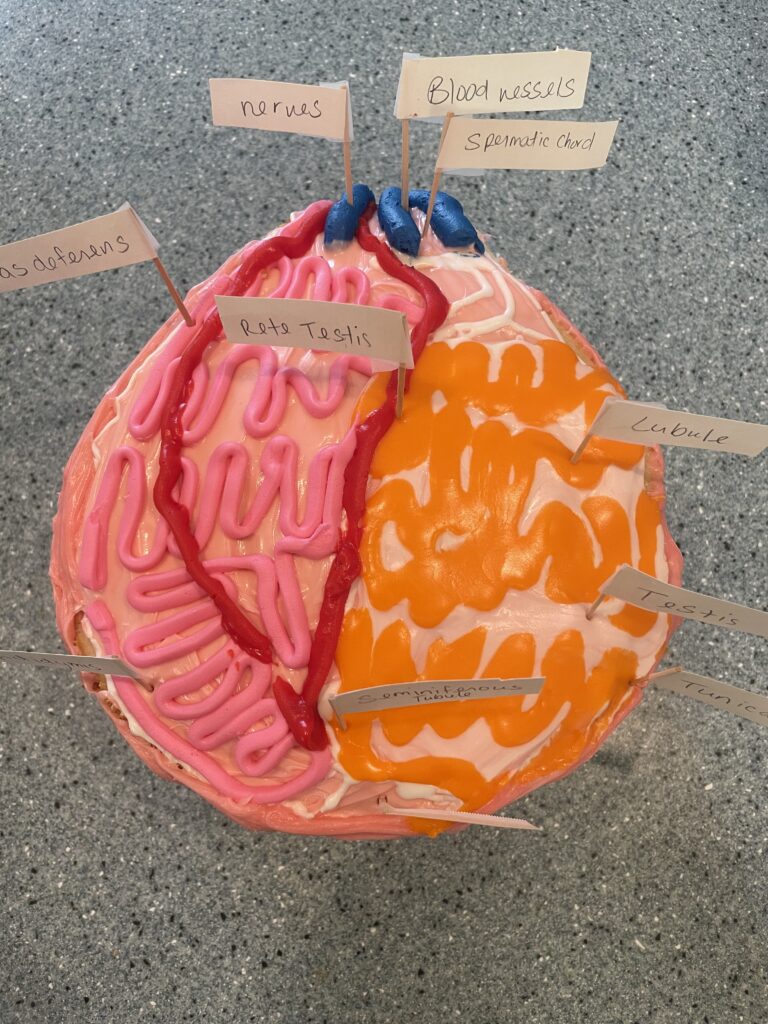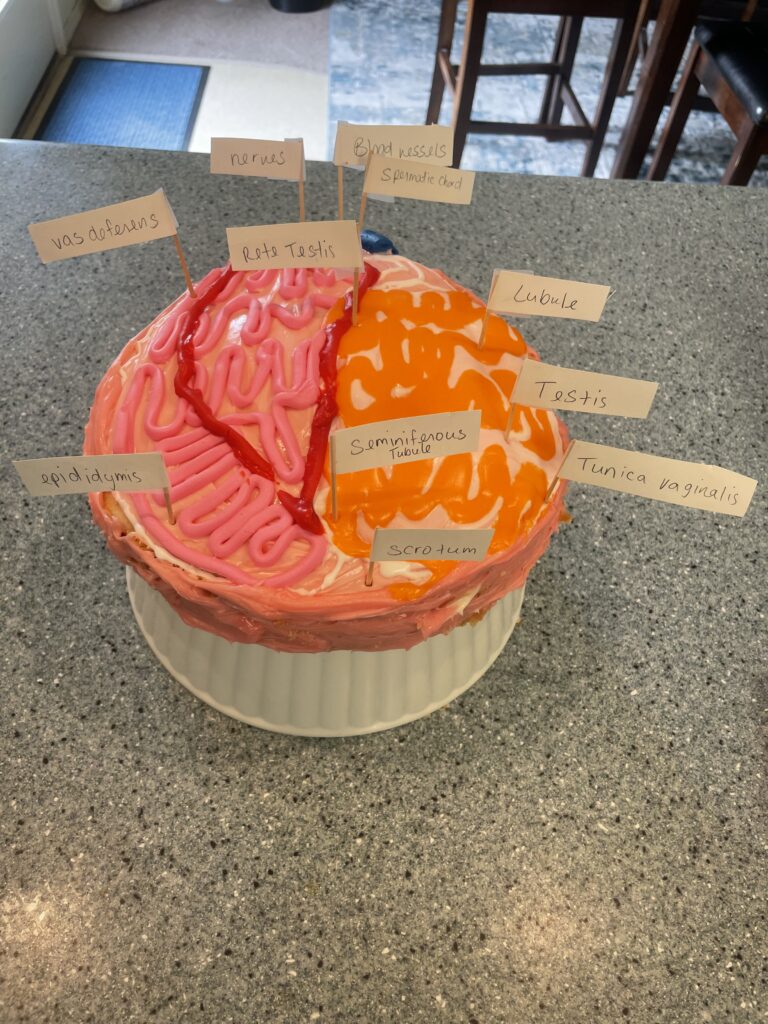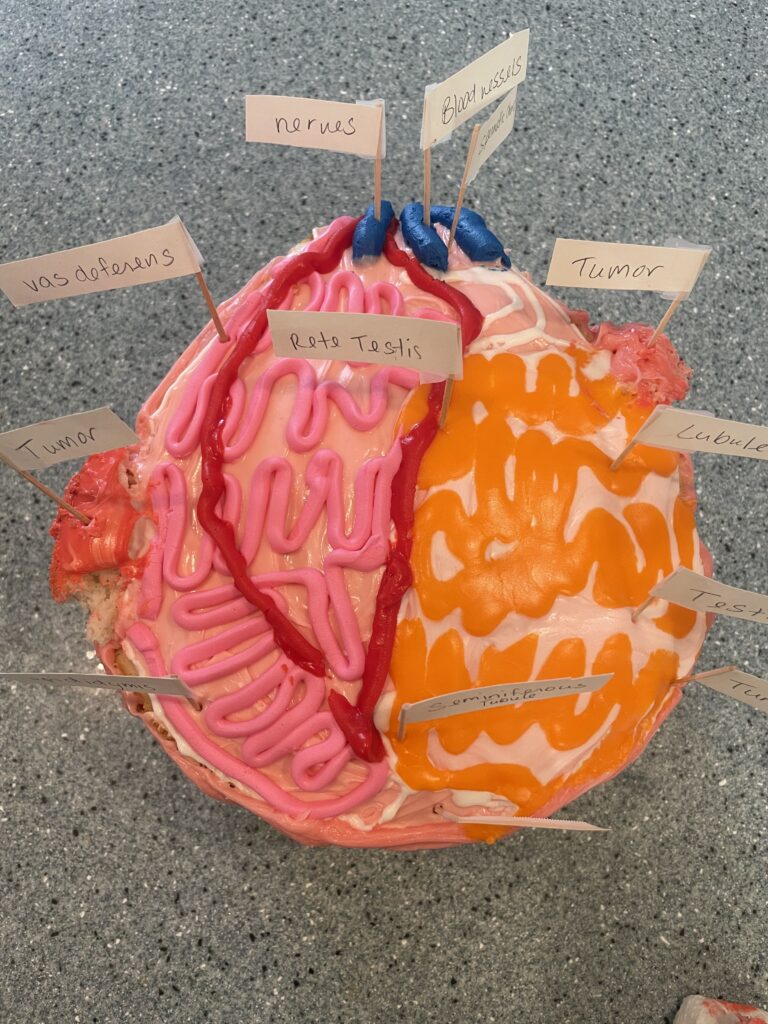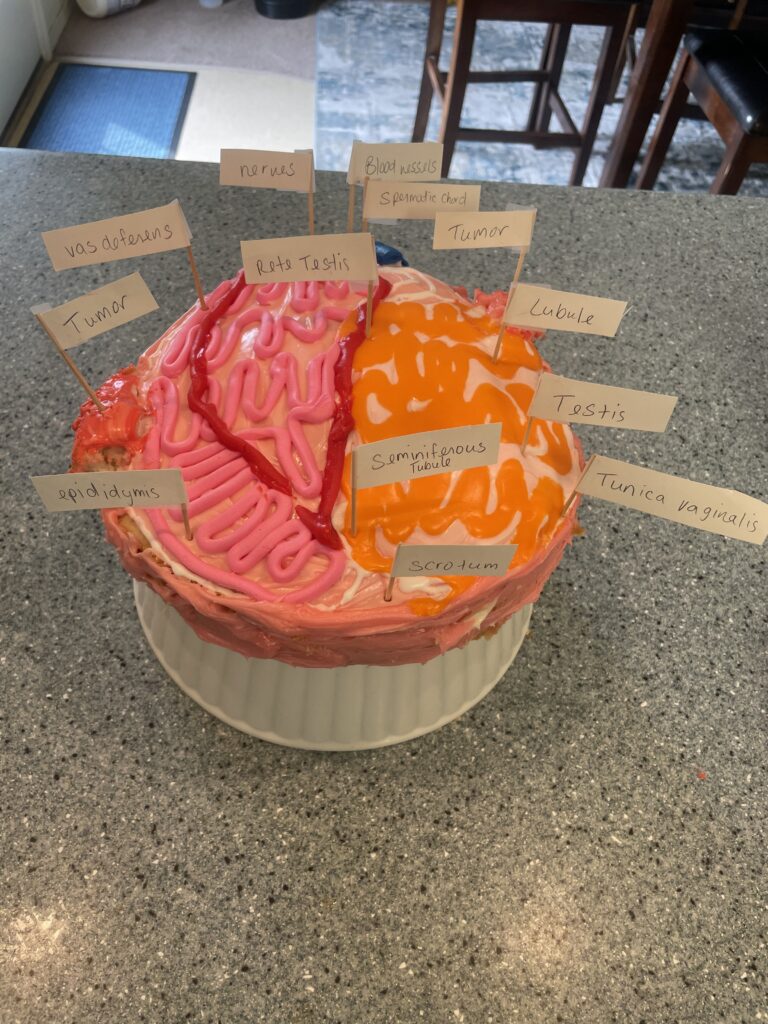My STEAM project involves creating a model that represents a healthy testicle and one affected by cancer. Understanding the structure and function of the male reproductive organ and recognizing the differences between healthy testicles and testicular cancer is essential for maintaining reproductive health and overall well-being. What makes this art unique and enjoyable is that both models are made out of cake. Using cake is a delicious and fun way to visually demonstrate the differences between the two. The normal “testicle cake” will display a clear unaffected testicle, while the “testicular cancer cake” will display lumps (tumors) on the side of the testicle. I have also labeled the components of the testicles to point out the inner makings of this structure of male reproductive organ.





Edward decided to create a model out of cake to represent the male testicles, and to create different models for a healthy testicle and one affected by cancer. Edward includes small flags on the cake that serve as labels for different structures of the testicles. Some structures include the seminiferous tubules, which produce sperm cells through spermatogenesis, nerves, the vas deferens, and much more. There are two types of testicular cancer that arise from germ cells called seminoma and non-seminoma. The first of which is a slow-growing cancer that mostly affects people once they reach their 40s or 50s. Non-seminoma grows quickly and affects people primarily in their late teens, 20s, and early 30s.
Signs of testicular cancer includes pain in the scrotum/testicles, a lump or swelling on a testicle, and blood in semen. The lumps, or tumors, are visible on the cancerous testicle cake, where there are actually two tumors present. Stage I of testicular cancer is when the cancer is confined to the testicle. Stage II is when the cancer has spread to the lymph nodes in the back of the abdomen. Stage III is when the cancer has spread to lymph nodes beyond the abdomen or to another organ. Testicular cancer is fatal if left untreated, but with surgery, radiation therapy, and chemotherapy it can be cured with a success rate of 95%, which can go up to 98% if the cancer is treated early. This project does a great job of artistically representing the differences between a healthy and unhealthy testicle using cake.